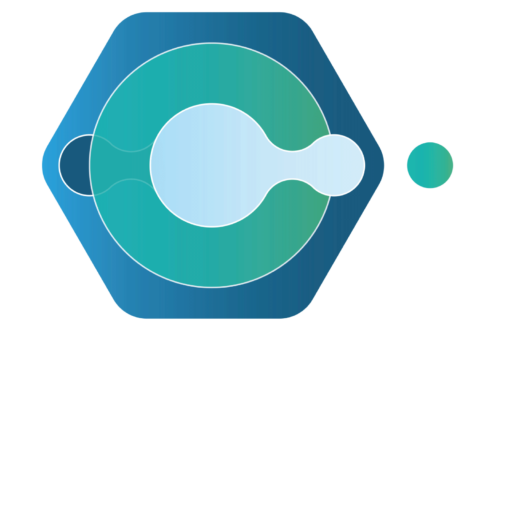Green-Tech
Green-Tech
Despite increasing awareness of environmental issues, the adoption of green technology remains inadequate in addressing the urgent challenges of climate change and resource depletion. Without a more robust commitment to sustainable practices and technology integration, the potential benefits of green tech will be underutilized, hindering the necessary transition to a more eco-friendly and resilient future.
According to the latest 2023 UN studies, access to electricity has improved in many parts of the world. The global economic uncertainty continues to cause significant volatility in energy prices, leading some countries to raise investments in renewables and others to increase reliance on coal, putting the green transition at risk. To ensure access to energy for all by 2030, we must accelerate electrification and increase investments in renewable energy sources. The share of renewable sources in total final energy consumption amounted to 19.1% globally in 2020, or 2.4 percentage points higher than in 2015. Part of this progression is due to lower final energy demand in 2020, as the pandemic disrupted social and economic activities worldwide. The electricity sector shows the largest share of renewables in total final energy consumption (28.2% in 2020) and has driven most of the growth in renewable energy use, while the heat and transport sectors have seen limited progress over the past decade. In 2021, there was a record-breaking installation of 268 Watts per capita of renewable capacity in developing countries, representing a year-on-year growth rate of 9.8%. Moreover, the positive global and regional trends hide the fact that the countries that are most in need of support are being left behind, even among developing countries.
The world needs a dramatic shift in our relationship with our natural environment, there exists a pervasive reluctance to committedly embrace green tech solutions with a collective and resolute responsibility to adopting sustainable technologies. The inertia in transitioning towards more eco-friendly practices not only impedes progress but also jeopardizes our ability to build a resilient future that harmonizes with the planet’s delicate ecological balance. Moreover, urgent and comprehensive action is imperative to unlock the full potential of green tech and steer our societies towards a sustainable and environmentally conscious trajectory, disregarding green energy technology solutions will lead to serious consequences in people health, planet sustainability, and life stability, including:
- Inefficiencies
- Climate change
- Floods
- Global warming
- Pollution
- Increasing in global greenhouse gas emissions (cumulative CO2 emissions)
- Biodiversity loss
- Threat to the planet health
- Threat to people’s lives

Green-Tech Importance:
The significance of Green Energy Technology, commonly known as Green-Tech, lies in its capacity to tackle pressing environmental challenges, promote sustainable development, and alleviate the impact of climate change. Embracing Green-Tech is crucial for creating a sustainable and resilient future, addressing environmental challenges, promoting economic development, and ensuring the well-being of current and future generations. Its adoption represents a fundamental step towards building a more sustainable and environmentally conscious global community.
Here are key reasons highlighting the importance of Green Tech:
Reducing Carbon Emissions: Green-Tech, such as renewable energy sources (solar, wind, hydro, geothermal), helps replace fossil fuels, significantly reducing greenhouse gas emissions and combating climate change.
Renewable Energy Sources: Green-Tech leverages renewable resources, ensuring a sustainable and inexhaustible supply of energy without depleting natural resources.
Diversifying Energy Sources: By diversifying the energy mix, Green-Tech reduces dependence on finite fossil fuel reserves, enhancing energy security and decreasing geopolitical vulnerabilities.
Clean Energy Production: Green-Tech minimizes air and water pollution associated with traditional energy sources, improving air quality, and safeguarding ecosystems.
Energy-Saving Technologies: Green-Tech includes innovations in energy efficiency, reducing overall energy consumption and minimizing waste in various sectors, including transportation, buildings, and manufacturing.
Reducing Habitat Destruction: Green-Tech’s focus on sustainable practices helps mitigate habitat destruction, preserving biodiversity and ecosystems crucial for environmental balance.
Climate-Resilient Solutions: Green-Tech promotes the development of climate-resilient infrastructure, minimizing vulnerabilities to extreme weather events and fostering long-term sustainability
International Cooperation: Adopting Green-Tech positions countries as leaders in the global movement towards sustainability, fostering international collaboration to address shared environmental challenges.
Advancements in Technology: Green-Tech drives innovation, encouraging research and development in clean energy technologies, energy storage, and sustainable practices.
Reducing Health Risks: The shift to Green-Tech reduces exposure to pollutants associated with traditional energy sources, leading to improved public health outcomes and decreased healthcare costs.
Scalability: Green-Tech solutions are scalable and can meet the increasing energy demands of a growing global population without compromising the environment.
Localized Energy Solutions: Green-Tech allows for the implementation of localized and decentralized energy solutions, empowering communities to manage and generate their energy sustainably.
SEIYAJ TECH as a collaborative force, seamlessly cooperate with the Green-tech innovators in software and hardware solutions, to localize and integrate among the top-notch innovations in the world delivering the best solutions that cover all the challenges faced in our environment, bringing the best solution to the governments to ensure people health lives, healthy planet, sustainable globe and future life stability. SEIYAJ TECH supportive effort will include all the stakeholders in green energy technology/Green-Tech. Hence, in private sector will include Green-tech companies, traditional industries, Investors and Financial institutions, for the public sector will include governments and ministries, regulatory agencies, and public utilities. In addition to NGOs, Research institutions, community-based organizations (CBOs), individuals, scientists and blockchain engineers and other parties to unify efforts in reducing ecological footprint and implementing the latest innovative devices and software for a healthy planet and sustainable life and much more.
solutions in renewable energy sources to help in creating and promoting an eco-friendly system towards the planet. SEIYAJ TECH leverage blockchain technology enabling secure and transparent tracking of sustainable practices and resource usage.
Green-Tech encompasses a diverse array of technologies dedicated to promoting environmental sustainability and lessening the impact of human activities on the planet. These technologies, which can be broadly categorized into software and hardware solutions, create a holistic ecosystem. By combining software and hardware solutions, Green-Tech strives to establish integrated and intelligent systems that contribute to environmental sustainability and effectively address the challenges posed by climate change and resource depletion.
Here’s a division of Green-Tech components into two categories:
Energy Management Software:
Software solutions that monitor and optimize energy usage in buildings, industries, and infrastructure.
Benefits: Enhances energy efficiency, reduces waste, and facilitates better decision-making for resource allocation.
Smart Grid and Demand Response Software:
Software systems that enable the smart management of electricity grids, incorporating demand response mechanisms to balance supply and demand dynamically.
Benefits: Increases grid efficiency, accommodates renewable energy variability, and promotes energy conservation.
Environmental Monitoring and Analytics:
Software tools that collect, analyze, and visualize data related to environmental parameters, including air and water quality.
Benefits: Supports informed decision-making, pollution prevention, and sustainable resource management.
Smart City Solutions:
Software for creating digital representations of buildings and infrastructure, optimizing design and construction processes for energy efficiency.
Benefits: Improves energy performance, reduces material waste, and enhances overall sustainability in construction projects.
Vertical Farming and Controlled Environment Agriculture:
Integrated software platforms for managing urban infrastructure, transportation, and public services with a focus on sustainability.
Benefits: Enhances efficiency, reduces resource consumption, and supports sustainable urban development.
Renewable Energy Technologies:
Hardware systems that generate energy from renewable sources, including solar panels, wind turbines, hydropower systems, and geothermal installations.
Benefits: Provides clean and sustainable energy, reduces dependence on fossil fuels, and mitigates greenhouse gas emissions.
Energy Storage Systems:
Hardware solutions such as batteries and other storage technologies that store excess energy generated from renewable sources for later use.
Benefits: Supports grid stability, enables better integration of intermittent renewables, and enhances energy reliability.
Energy-Efficient Appliances and Devices:
Hardware devices designed to consume less energy, including energy-efficient lighting, appliances, and electronic equipment.
Benefits: Reduces energy consumption, lowers electricity bills, and decreases overall environmental impact.
Green Building Technologies:
Hardware solutions for constructing and retrofitting buildings to improve energy efficiency, including energy-efficient HVAC systems, insulation, and sustainable materials.
Benefits: Lowers energy consumption, enhances occupant comfort, and reduces the environmental footprint of buildings.
Electric Vehicles and Charging Infrastructure:
Hardware components such as electric vehicles, charging stations, and associated infrastructure.
Benefits: Reduces reliance on fossil fuels in transportation, decreases air pollution, and promotes sustainable mobility.
Water and Waste Management Technologies
Hardware systems for efficient water use, wastewater treatment, and waste recycling.
Benefits: Conserves water resources, reduces pollution, and promotes a circular economy.
Smart Sensors and IoT Devices:
Hardware devices, including sensors and IoT devices, that monitor environmental conditions, optimize resource usage, and enable data-driven decision-making.
Benefits: Enhances real-time monitoring, supports precision resource management, and improves overall system efficiency.

